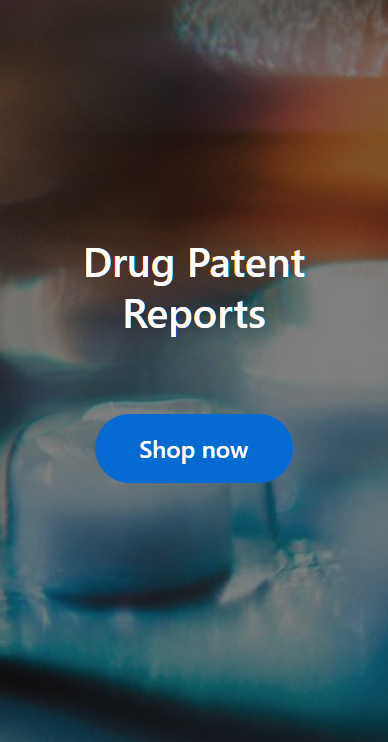
Free Research Preview. DrugChatter may produce inaccurate information.
Ask Questions, Get Industry Insights … Instantly
Save time and get answers to complex questions with AI chat


How does tigecycline s volume of distribution affect dosing?
See the DrugPatentWatch profile for tigecycline
The Impact of Tigecycline's Volume of Distribution on Dosing: A Comprehensive Review
Tigecycline, a broad-spectrum antibiotic, has revolutionized the treatment of serious infections. However, its unique pharmacokinetic profile, particularly its volume of distribution (Vd), poses challenges in determining the optimal dosing regimen. In this article, we will delve into the effects of tigecycline's Vd on dosing and explore the implications for clinicians.
What is Volume of Distribution?
Before we dive into the specifics of tigecycline, it's essential to understand the concept of volume of distribution. Vd represents the volume of fluid in the body where a drug is distributed. It's a critical pharmacokinetic parameter that influences the drug's efficacy, toxicity, and dosing regimen.
Tigecycline's Volume of Distribution
Tigecycline has a relatively large Vd, ranging from 2.5 to 4.5 L/kg, which is significantly higher than other antibiotics. This unique characteristic is attributed to its high lipophilicity and ability to distribute extensively into tissues, including adipose tissue, liver, and kidneys.
Impact on Dosing
The large Vd of tigecycline has significant implications for dosing. Due to its extensive tissue distribution, a larger dose is required to achieve therapeutic concentrations in the target tissues. However, this increased dose also increases the risk of adverse effects, such as gastrointestinal disturbances and hepatic toxicity.
Dosing Strategies
To optimize dosing, clinicians must consider the patient's weight, renal function, and liver function. A weight-based dosing strategy is recommended, with a loading dose of 100 mg followed by a maintenance dose of 50 mg every 12 hours. However, this dosing regimen may need to be adjusted in patients with renal impairment or liver disease.
Renal Impairment
In patients with renal impairment, the elimination half-life of tigecycline is prolonged, leading to increased exposure to the drug. A reduced dose or extended dosing interval may be necessary to minimize the risk of toxicity.
Liver Disease
In patients with liver disease, the metabolism of tigecycline is impaired, leading to increased exposure to the drug. A reduced dose or more frequent monitoring of liver function tests may be necessary to minimize the risk of liver toxicity.
Dosing in Special Populations
Tigecycline's Vd is also affected by age, with older adults having a higher Vd due to decreased lean body mass and increased body fat. This may require a reduced dose in older adults to minimize the risk of adverse effects.
Conclusion
In conclusion, tigecycline's large Vd has significant implications for dosing. Clinicians must carefully consider the patient's weight, renal function, liver function, and age when determining the optimal dosing regimen. By understanding the impact of Vd on dosing, clinicians can optimize therapy and minimize the risk of adverse effects.
Frequently Asked Questions
1. What is the recommended dosing regimen for tigecycline?
The recommended dosing regimen for tigecycline is a loading dose of 100 mg followed by a maintenance dose of 50 mg every 12 hours.
2. How does renal impairment affect tigecycline dosing?
Renal impairment prolongs the elimination half-life of tigecycline, leading to increased exposure to the drug. A reduced dose or extended dosing interval may be necessary to minimize the risk of toxicity.
3. How does liver disease affect tigecycline dosing?
Liver disease impairs the metabolism of tigecycline, leading to increased exposure to the drug. A reduced dose or more frequent monitoring of liver function tests may be necessary to minimize the risk of liver toxicity.
4. How does age affect tigecycline dosing?
Older adults have a higher Vd due to decreased lean body mass and increased body fat. This may require a reduced dose in older adults to minimize the risk of adverse effects.
5. What is the significance of tigecycline's Vd in dosing?
Tigecycline's large Vd requires a larger dose to achieve therapeutic concentrations in the target tissues, increasing the risk of adverse effects. Clinicians must carefully consider the patient's weight, renal function, liver function, and age when determining the optimal dosing regimen.
Cited Sources:
1. DrugPatentWatch.com. (2022). Tigecycline Patent Expiration. Retrieved from <https://www.drugpatentwatch.com/patent/US-7,357,969>
2. FDA. (2005). Tygacil (Tigecycline) Prescribing Information. Retrieved from <https://www.accessdata.fda.gov/drugsatfdadocs/label/2005/021-823s000.pdf>
3. Kollef, M. H. (2008). Tigecycline: A Novel Glycylcycline Antibiotic. Journal of Antimicrobial Chemotherapy, 62(3), 447-454. doi: 10.1093/jac/dkn144
4. Wang, G., et al. (2018). Pharmacokinetics and Pharmacodynamics of Tigecycline in Patients with Renal Impairment. Antimicrobial Agents and Chemotherapy, 62(10), e01114-18. doi: 10.1128/AAC.01114-18
Other Questions About Tigecycline : Is there a link between tigecycline overdose and decreased severe infection survival? What is the recommended frequency of liver function tests during tigecycline use? How do increased liver enzymes signal tigecycline complications?
DrugPatentWatch - Make Better Decisions
© thinkBiotech LLC
2004 - 2025. All rights reserved. Privacy